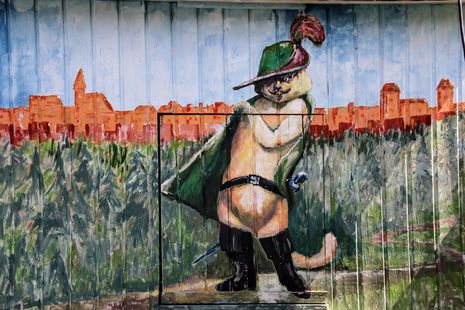Puss in Boots: The Last Wish breathes new life into animation
Anxiety is refreshingly shown in all its shock, terror and then relief in this animated feature, opening the discussion for a younger age group

DreamWorks released Shrek in 2001 to the glee of children and adults around the world. Over 20 years later, a new entry to the franchise has entered the scene, rivalling the original in its comedy, animation and narrative. But its depiction of mortality and anxiety may make it the best so far.
The film follows, as you might expect, Puss in Boots — and his friends, Kitty Softpaws and Perrito — on their search for a fallen wishing star. Upon finding it, Puss hopes that he will be able to wish back the eight lives that he lost so carelessly across his daring adventures. This wish is very important, because one of the many villains of the film, Death, is determined to take Puss’s last remaining life away from him. Death, in his playfully charming eeriness, tells Puss: “I don’t mean it metaphorically, or rhetorically, or poetically, or theoretically, or any other fancy way. I’m Death. Straight up.”
In one scene, Death’s arrival is announced by a series of unsettling images and sounds. Animators cleverly show his fur slowly rising across his arms and back, which, combined with slo-mo and a daunting whistle, forces the audience to sit in discomfort as Puss’s panic consumes him.
“Puss is conquered by his own fears and not Death”
One of the film’s best qualities is its subtlety. When Puss decides he is tired of running at the end of the film, he is referring not only to his fear of Death, but more so to his fear of life. What makes this feature so authentic in its portrayal of anxiety is that it shows the audience that Puss is conquered by his own fears and not Death. The only character that is surprised by the fact that Puss runs away from things is Puss himself, with Death even encouraging Puss to continue fighting when he loses his sword. It is clear that the effects that overwhelm Puss in the film are not foreign to him and will only be changed by altering the way he lives, something that everyone, cartoon cat or not, must acknowledge at some point.
In another scene, Puss flees from Death into the woods. Following frantically, Perrito carries Puss’s iconic hat, calling after him. Peritto finds him and cries out Puss’s name in relief. Cut to an overhead shot spiralling down to a collapsed Puss on the floor. Sharp inhales with distorted audio and blurred vision take over the screen. The audience is suspended in shock and confusion. Desperately looking around, Peritto has a realisation and rests his solemn head onto Puss’s chest and closes his eyes. As Puss’s breathing slows, he thanks Peritto in a tone which is full of both exhaustion and relief. Puss finally reveals to Peritto that he doubts he can live up to his own name, that he has lost his identity and will likely be killed if his luck runs out. Peritto tries to explain that it’s okay to be afraid, but Puss replies: “No! Not for Puss in Boots! [...] Without lives to spare, I am nothing.”
“Anxiety is shown in all its shock, then terror, then relief.”
Seeing anxiety depicted in such a grounded manner, where the scene communicates little except the experience itself is a stunning change to witness, particularly from a predominantly children’s animation company. The mental struggle that Puss suffers is not exaggerated then disposed of or played for laughs as is done with Thor in Avengers: Endgame. Anxiety is shown in all its shock, then terror, then relief. Perhaps this is a sign of the animation company’s resurgence in the area of children’s entertainment, not too dissimilar from the film that got the ball rolling for them in the first place, Shrek. DreamWorks have brought the same disruption used twenty years before, to once again change the animation industry.
All in all, Puss in Boots: The Last Wish is a significant contribution to the genre of children’s animation, that offers an opportunity to admire the vibrance and narrative potency which is so lacking in other films of its kind. On top of that, the movie manages to capture both the terror and relief of experiencing anxiety from beginning to end, opening the discussion to a younger age group, and creating a meaningful experience for young children who might find themselves relating to Puss. The film deserves the high praise surrounding it.
 News / Eight Cambridge researchers awarded €17m in ERC research grants27 December 2025
News / Eight Cambridge researchers awarded €17m in ERC research grants27 December 2025 News / Downing investigates ‘mysterious’ underground burial vault 29 December 2025
News / Downing investigates ‘mysterious’ underground burial vault 29 December 2025 Lifestyle / Ask Auntie Alice29 December 2025
Lifestyle / Ask Auntie Alice29 December 2025 Sport / Hard work, heartbreak and hope: international gymnast Maddie Marshall’s journey 29 December 2025
Sport / Hard work, heartbreak and hope: international gymnast Maddie Marshall’s journey 29 December 2025 Interviews / Meet Juan Michel, Cambridge’s multilingual musician29 December 2025
Interviews / Meet Juan Michel, Cambridge’s multilingual musician29 December 2025










